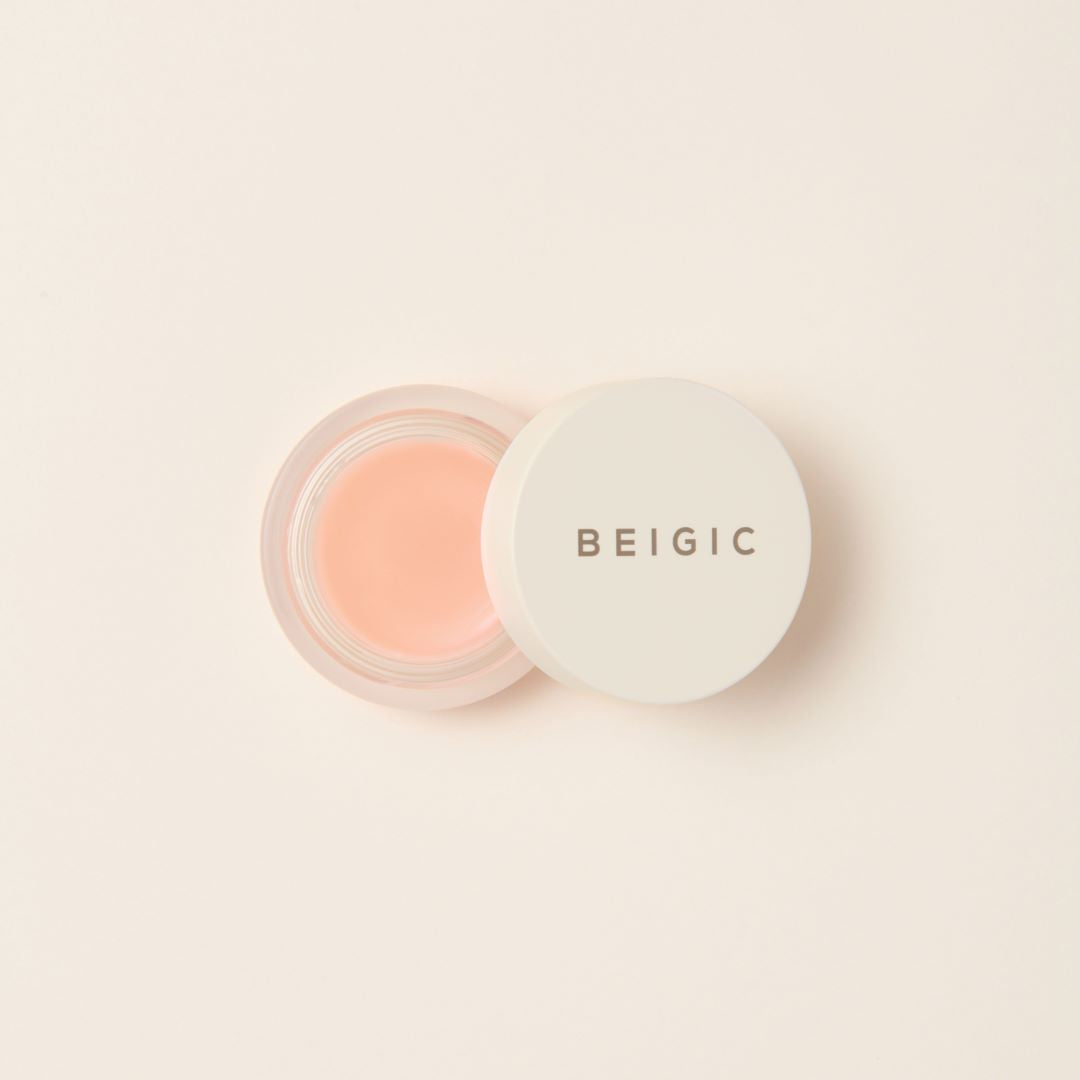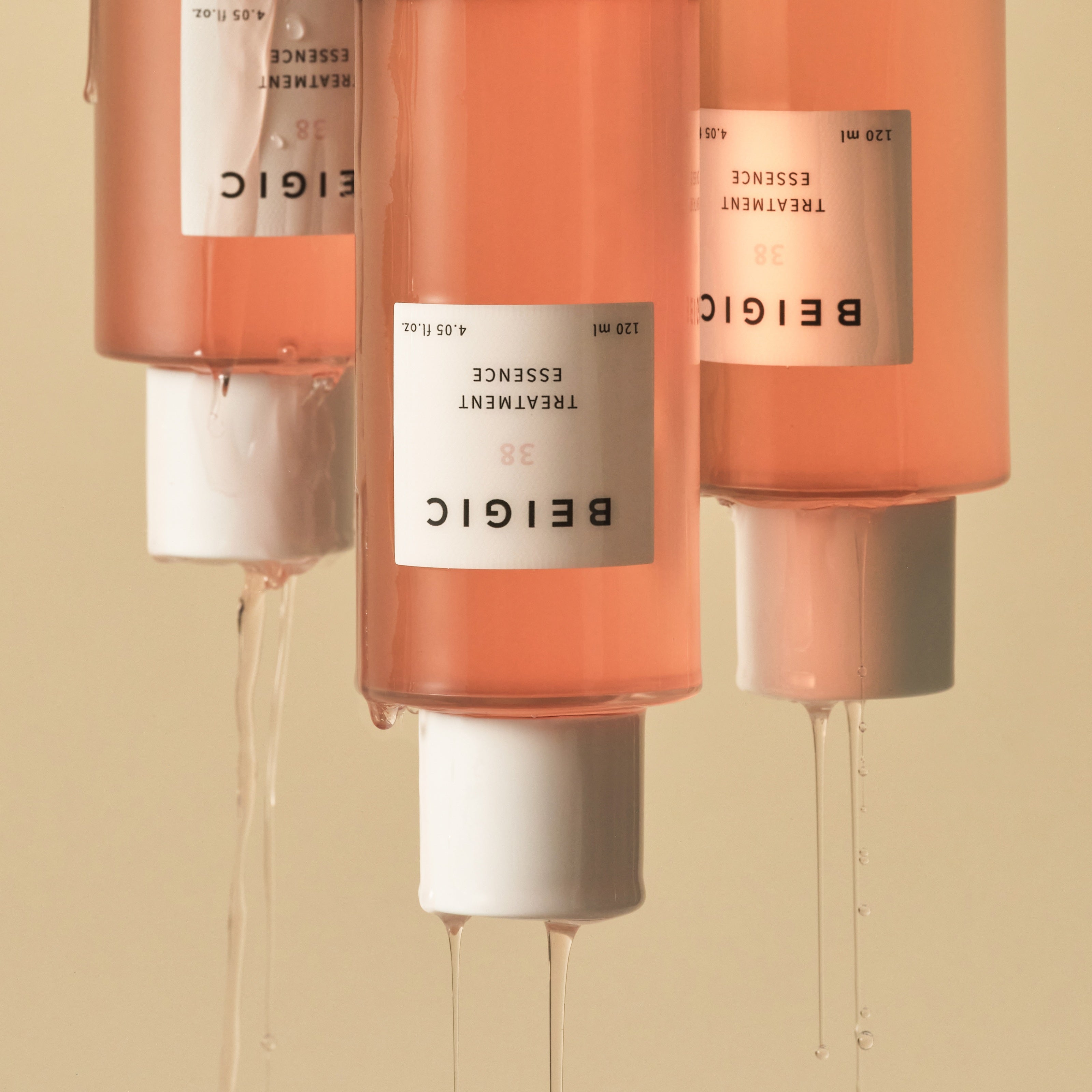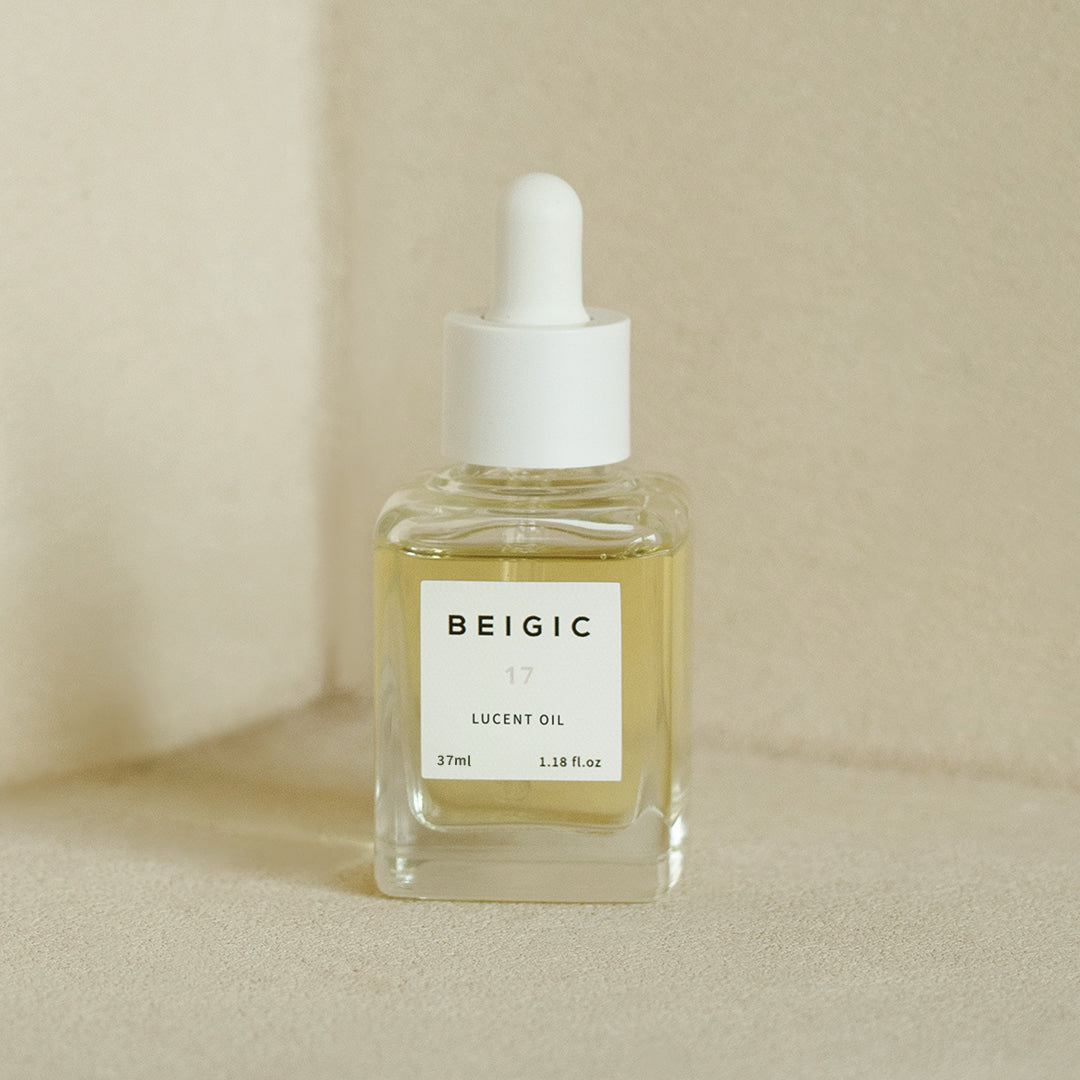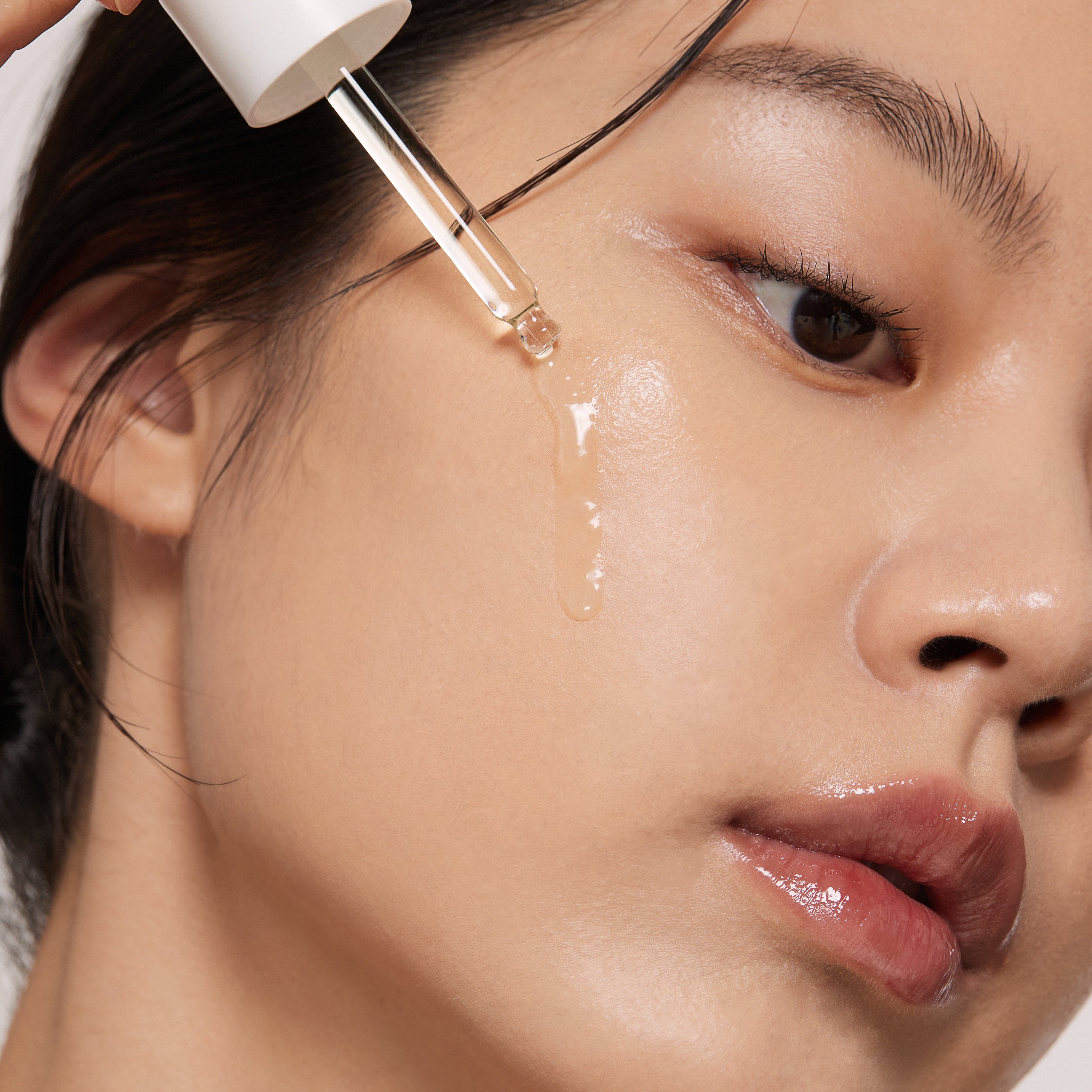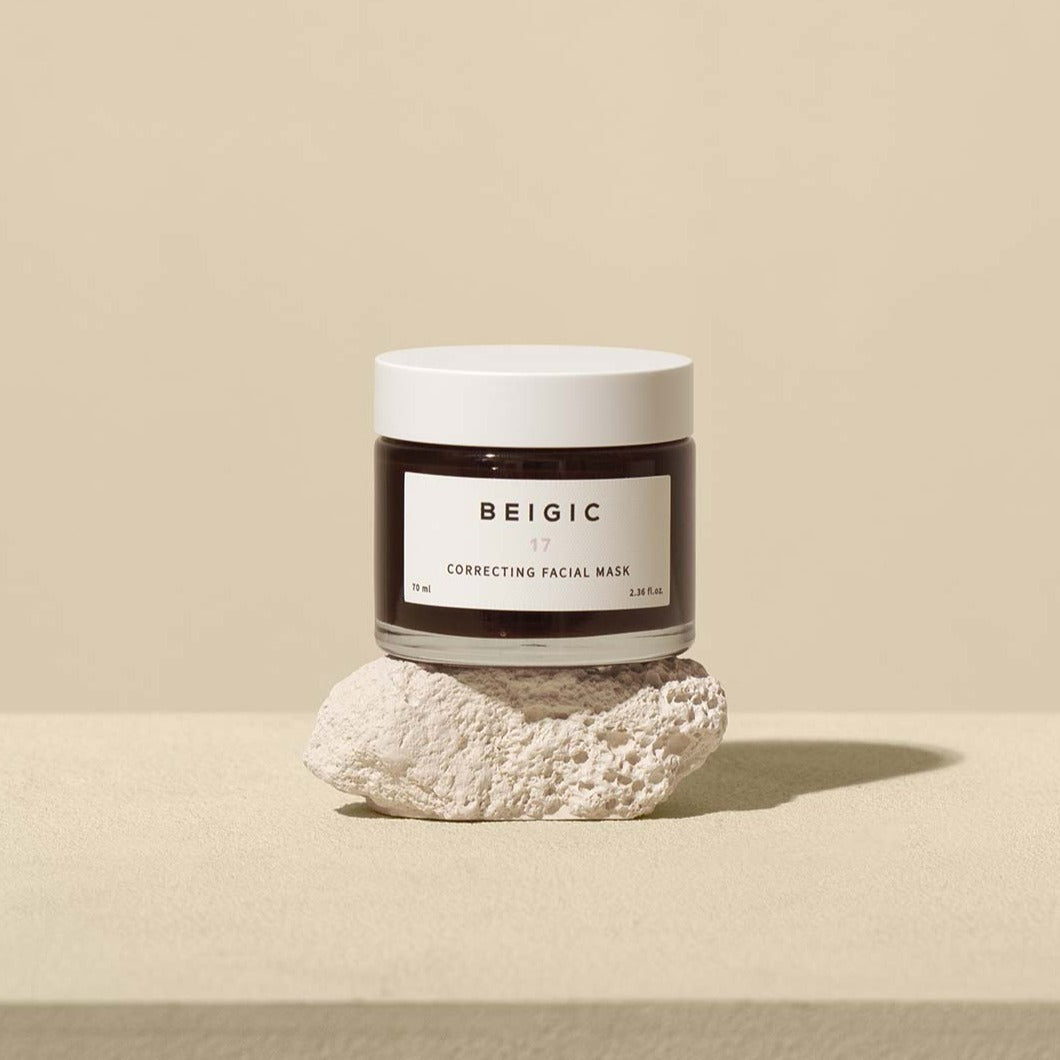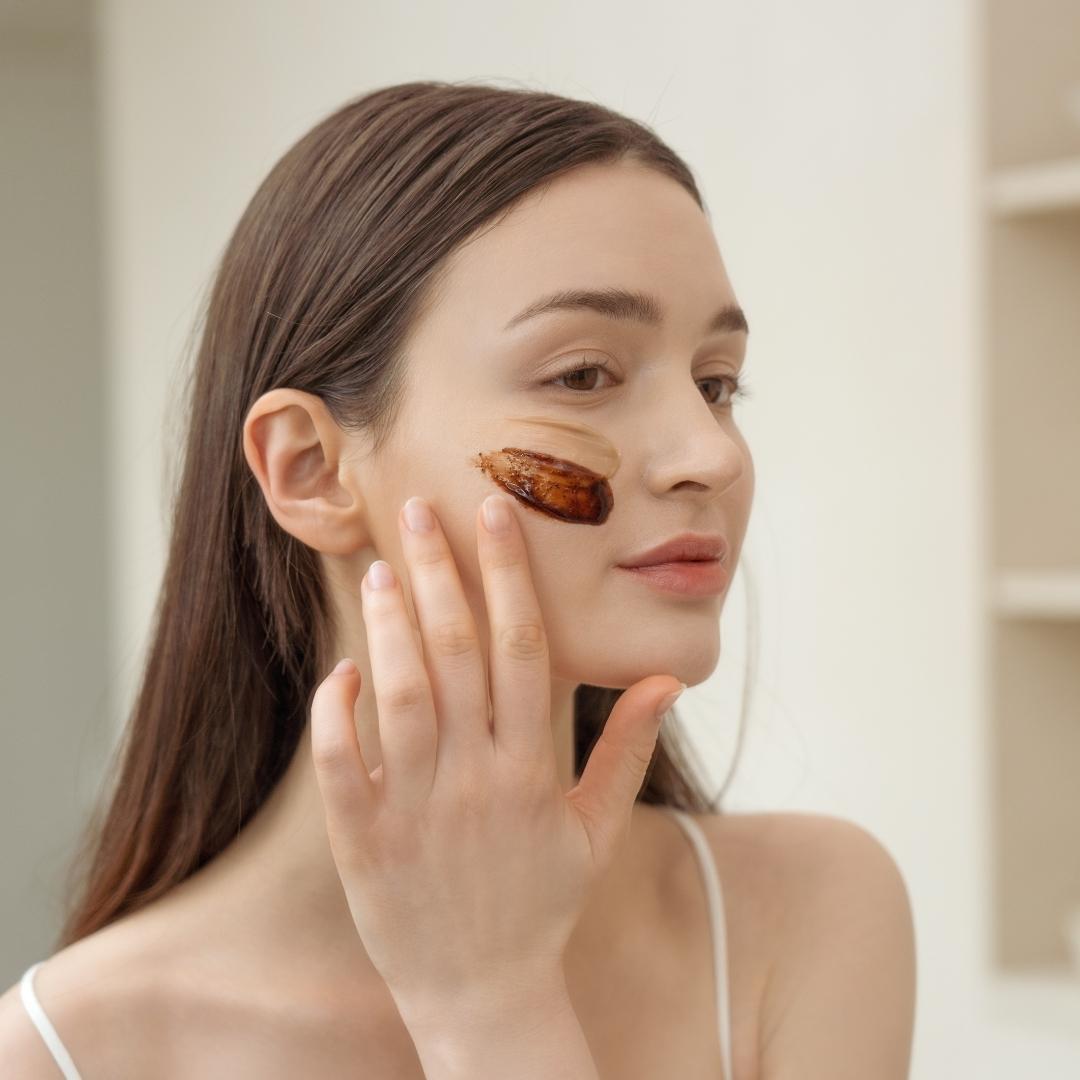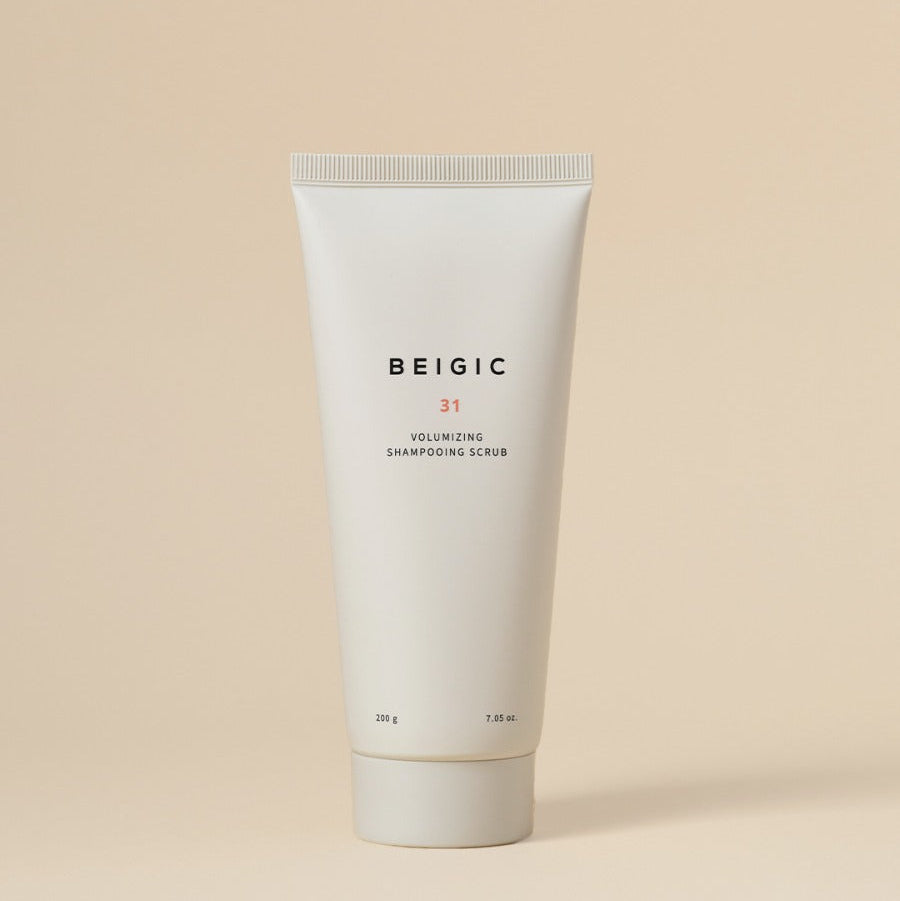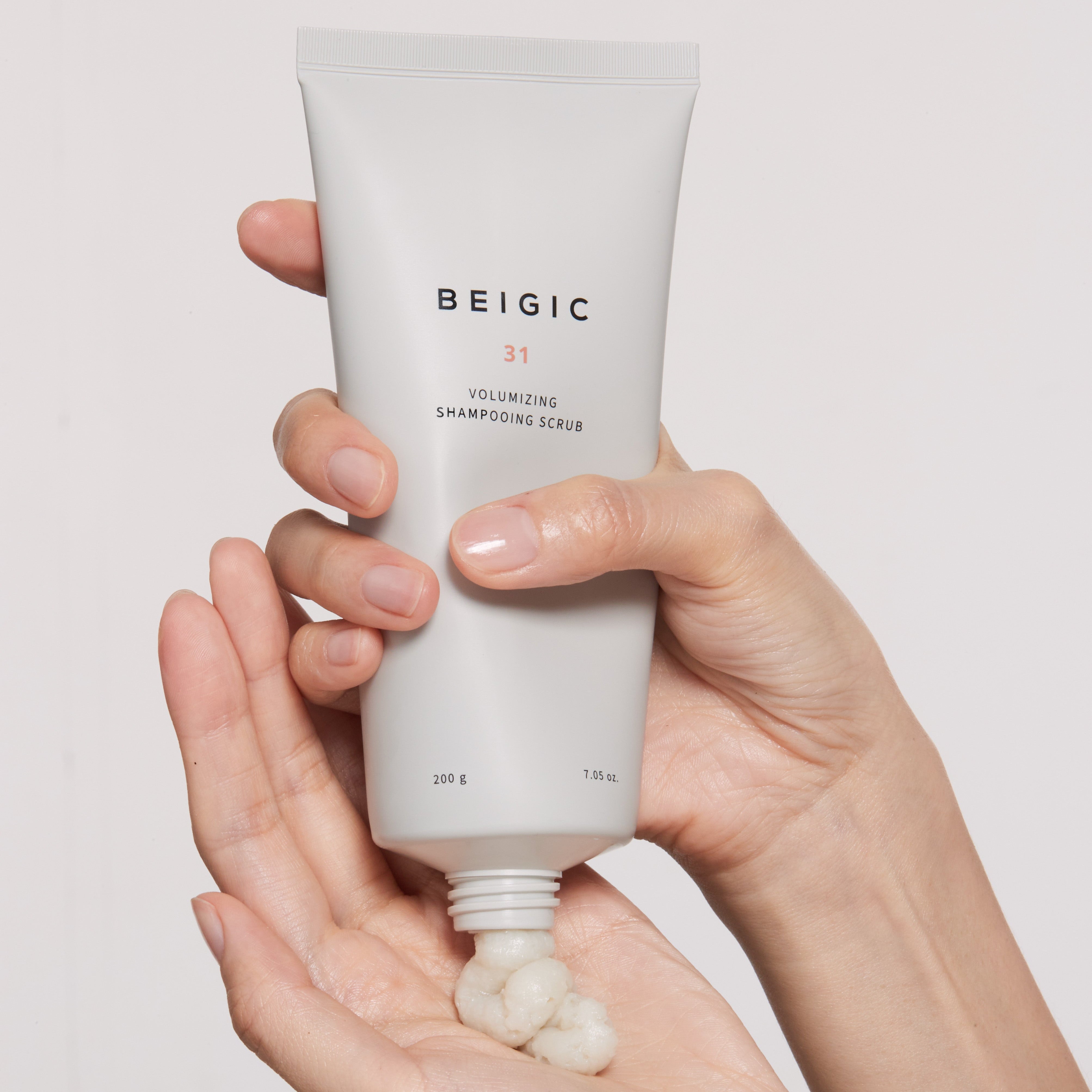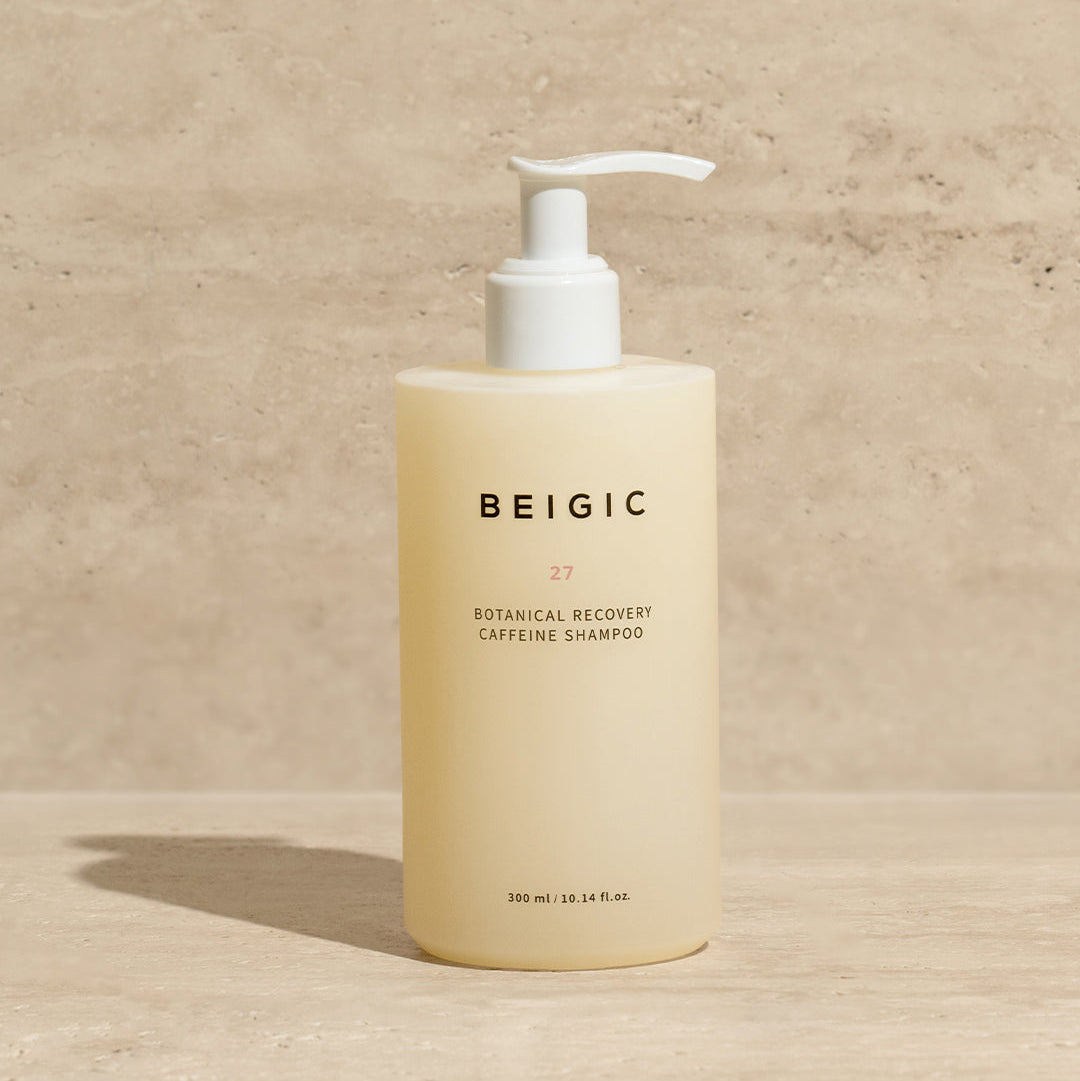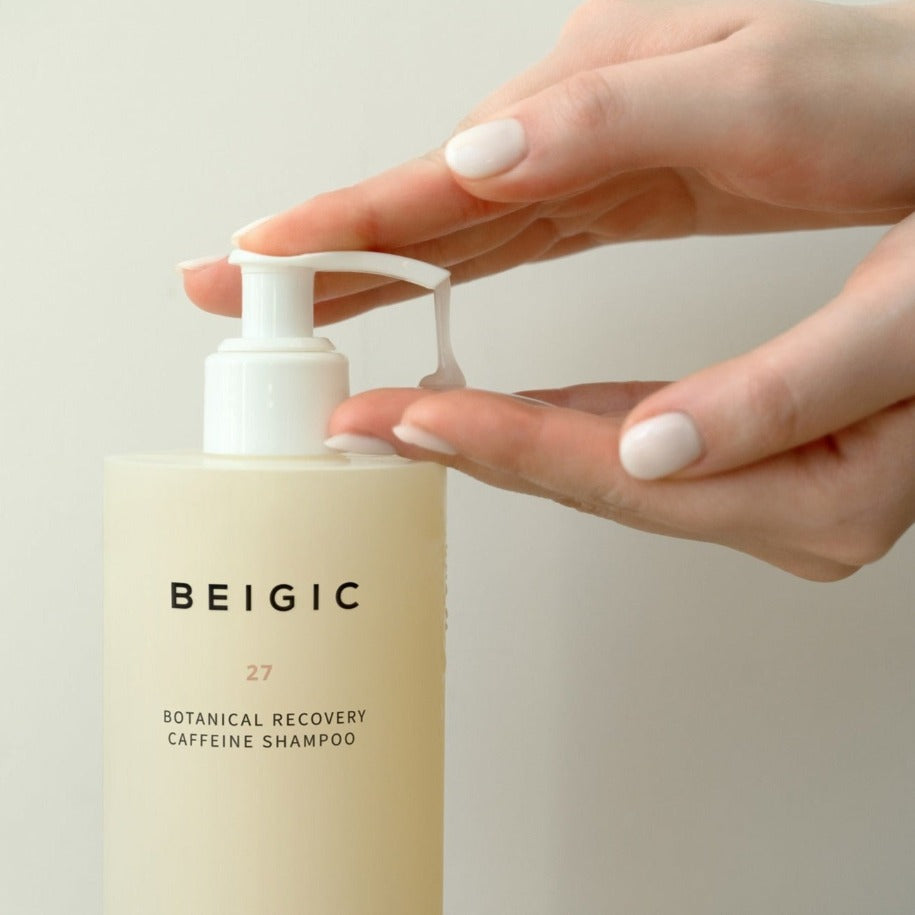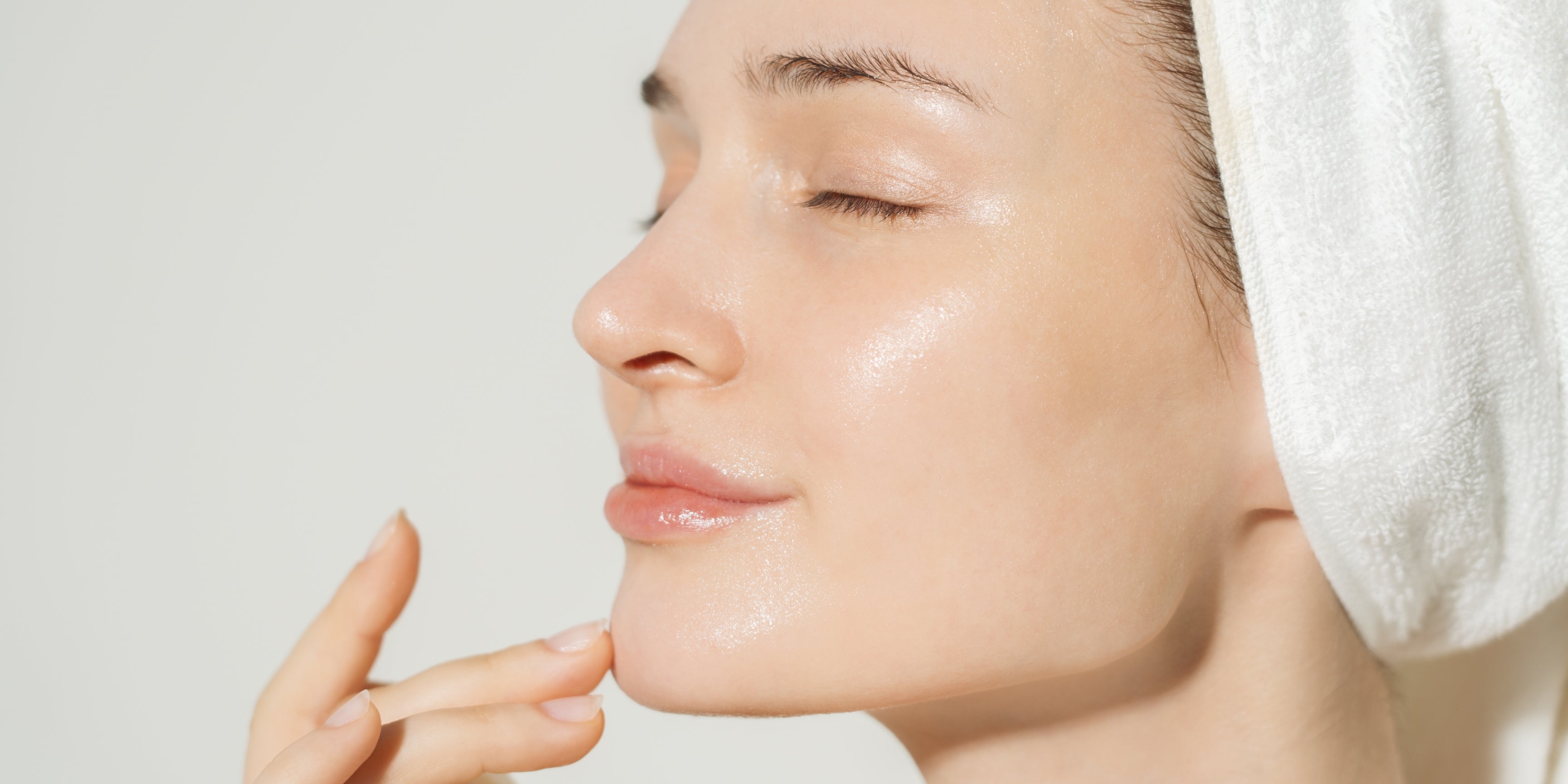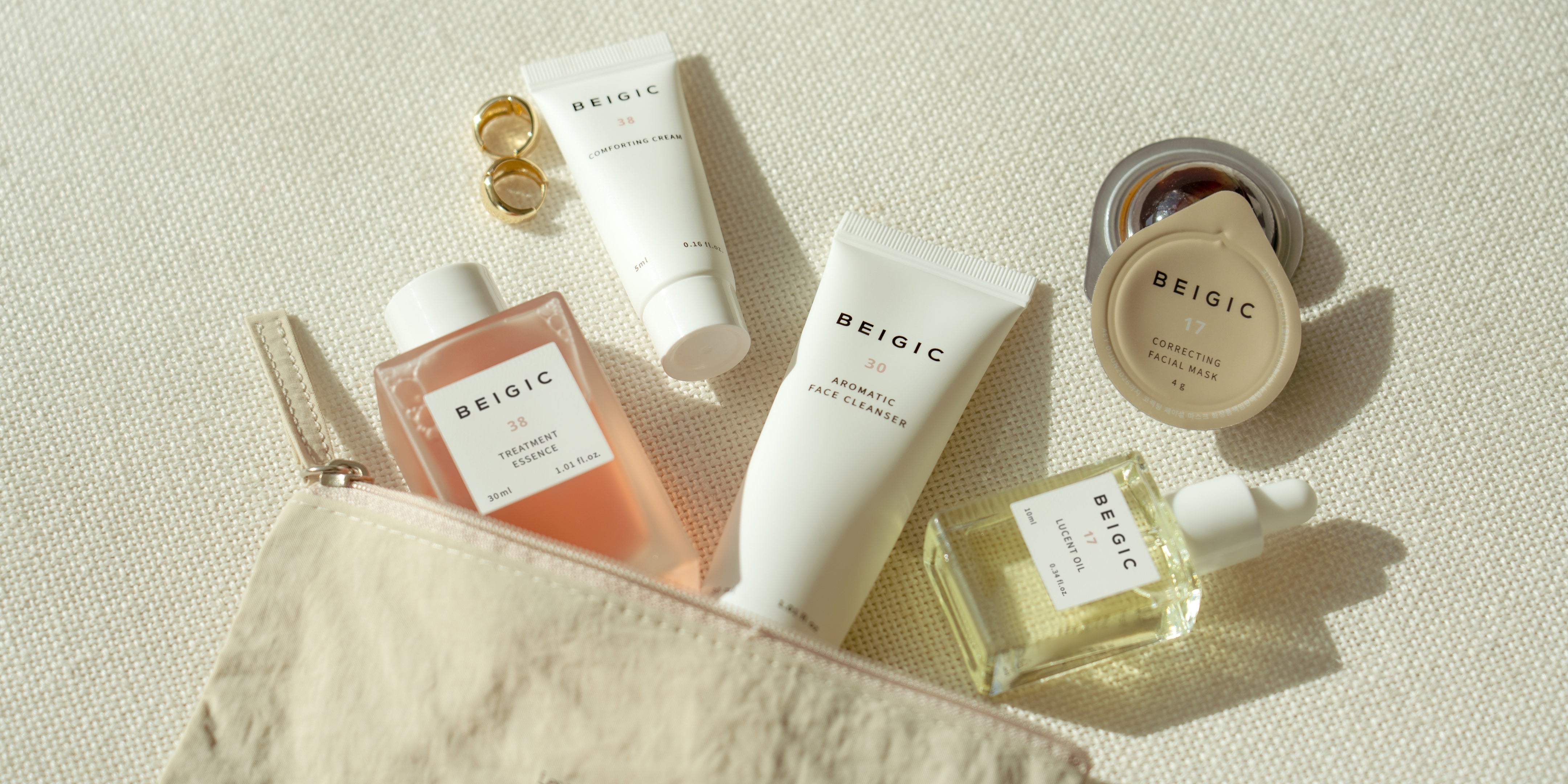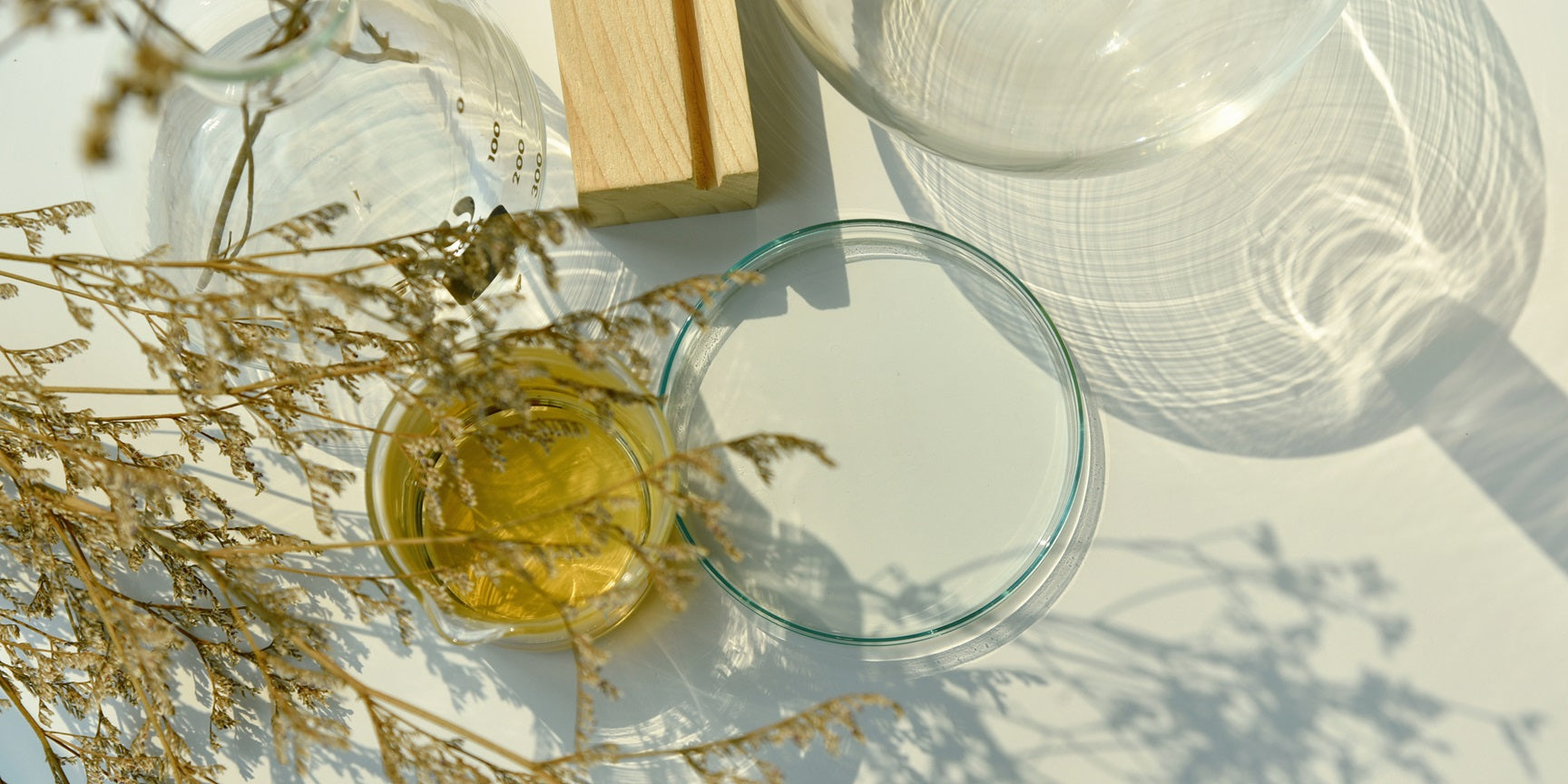
Holistic Beauty: Nutrition & Skin
A beautiful skin begins from within.
Holistic beauty is a comprehensive beauty concept based on the principle that our inner balance is reflected outwardly. It relies on fundamental pillars, including nutrition, hygienic techniques, and skincare. Diet, emotions, and lack of sleep are all factors that influence our skin and health.
Nutrition plays a particularly crucial protective role in preserving skin health, as well as in maintaining the quality of the microbiota, the integrity of barriers, and the proper functioning of the immune system—protecting against inflammation and oxidation, the sources of cellular aging. Let's delve into the connection between nutrition and skin, exploring beneficial foods and those to avoid or moderate.

1. Acid-Base Balance
The acid-base balance is the equilibrium between the acidity and alkalinity levels in the body. It is an essential function involving the regulation of blood and tissue pH. A balanced body pH typically ranges from 7.38 to 7.42. When the body taps into its reserves to restore pH to alkalinity, it becomes more acidic, potentially leading to acidosis.
Skin in acidosis becomes dry, fragile, reactive, with an atopic tendency. It may experience itching and redness. Acidosis is a factor in accelerated skin aging and, in general, contributes to the occurrence of skin issues. Fissures, cracks, recurrent herpes, canker sores, and even inflammatory acne can be linked to acidosis.
|
Most Acidifying Foods |
Sodas and fruit juices, dairy products (especially cheese), meats, fish, refined cereals (white rice, pasta, oat flakes, white bread, pizzas, quiches), nuts (especially almonds and walnuts), excessive table salt, alcohol. |
|
Most Alkalizing Foods |
Fresh fruits, dried fruits, vegetables. |
|
Neutral or Slightly Acidifying Foods |
Water, green tea, vegetable juices, legumes, fats. |
2. The Role of Lipids in Skin Beauty
Lipids play a crucial role in maintaining the quality of the skin through various aspects: they serve as an energy reserve, provide volume, and act as thermal insulators. Within the skin, lipids also serve as precursors to important molecules such as cholesterol and vitamin D. Cell membranes are predominantly composed of lipids. Lastly, the hydrolipidic film, which I have often discussed, along with sebum, is composed of fatty substances.
There are different types of lipids, including saturated fatty acids, monounsaturated fats (omegas 9 & 7), and polyunsaturated fats (omegas 6 & 3). The balance between omega-3 and omega-6 is essential for healthy skin. Ideally, the omega-6/omega-3 ratio should be 5/1.
Certain omega-6 fatty acids improve skin quality, such as those present in evening primrose oil and borage oil, which enhance skin cohesion.
Omega-3 fatty acids are specifically beneficial for the skin due to their emollient and soothing properties, stemming from their anti-inflammatory action. They contribute to the preservation of the skin barrier and are particularly useful for dry, atopic-prone skin. Additionally, they have anti-aging effects and combat skin aging from within.
Omega-7 fatty acids, found in sea buckthorn oil and macadamia oil, are beneficial for dry skin. They are primarily available in the form of dietary supplements. These elements are crucial for improving the hydrolipidic film and mucous membranes. They aid in wound healing and combat insulin resistance (metabolic role).
3. Vitamins & Skin Health
Vitamin D regulates skin cell proliferation, the synthesis of crucial proteins in barrier function, such as filaggrin, and contributes to immunity, wound healing, and the overall quality and trophicity of the skin. Vitamin D is primarily synthesized by the skin in the presence of UV radiation and is often subject to supplementation.
Vitamin A is important for the skin and all mucous membranes due to its role in cellular renewal. It is found in animal-derived foods directly in the form of retinol and in plants as provitamin A. Beta-carotene or provitamin A also has antioxidant properties: in synergy with other micronutrients, it helps protect the body from premature aging. Foods rich in beta-carotene include sweet potatoes, carrots, pumpkin, spinach, apricots, and melons.
Vitamin E serves as an antioxidant. It acts synergistically with vitamin C, beta-carotene, and selenium, constituting a genuine cellular protector for the skin. It particularly safeguards the lipids that make up cell membranes and LDL lipoproteins. Foods rich in vitamin E include sunflower oil, hazelnut oil, olive oil, wheat germ, dried apricots, and pistachios.
Vitamin C has a significant antioxidant effect. It is essential for numerous reactions within the body and plays a major role in immunity. In synergy with vitamin E, beta-carotene, selenium, and zinc, it traps the excess free radicals present in the body, which accelerate cellular aging. It contributes to collagen production and enhances the assimilation of iron, especially in non-heme form. Foods rich in vitamin C include acerola, blackcurrant, parsley, raw red pepper, kiwi, lemon, and orange.
B-group vitamins are particularly important for the skin and maintain strong interactions among themselves and with various nutrients. They are mainly found in brewer's yeast, whole grains, nuts, as well as organ meats, seafood, legumes, green or dry vegetables, fruits, and dairy products.
Alongside a vitamin-rich diet, you can boost your skin’s defenses with targeted skincare. Our Tone Up CE Sunscreen, enriched with vitamins C and E, protects your skin from environmental damage, preserves its natural collagen, and leaves it radiant and healthy.
4. Minerals & Skin Health
Zinc is a trace element found, among other sources, in whole grains, legumes, and nuts. It is a crucial element in micronutrition for maintaining skin balance, synthesizing proteins, transcription factors for cell renewal, and enhancing immune efficiency.
Selenium, notably present in Brazil nuts, stimulates cell renewal and has an anti-inflammatory effect.
Magnesium contributes to maintaining skin elasticity by promoting collagen synthesis. It plays a significant role in alleviating skin pruritus (itchiness). Magnesium also aids in skin hydration and reducing inflammation. It participates in proper mineralization, ensuring strong, non-brittle hair and nails. Magnesium acts as a cofactor in association with many compounds beneficial to the skin, including vitamin D and B-group vitamins. It is obtained from magnesium-rich water, consumption of vegetables, legumes, high-quality dark chocolate, whole grains, and nuts.
In cases of iron deficiency, skin xerosis is often exacerbated, wound healing is impaired, the skin appears pale, and dehydration occurs more easily.
5. Foods to Avoid or Moderate
Certain foods can negatively affect the skin and its quality, so it’s important to understand why they should be limited or consumed in moderation.
Animal Proteins and Dairy Products
Protein intake is necessary for maintaining the integrity of the dermis, hypodermis, and the quality of the skin's supporting tissue, including the proteins ensuring tight junctions of the epidermis. However, an excessive intake of animal proteins compared to plant proteins can lead to the presence of growth factors that may disrupt the skin's cycle.
Dairy products, especially cow's milk, are often highlighted in acne-related issues. They contain elements that have deleterious effects on the skin: excessive dairy consumption causes generalized inflammation, dark circles, bags under the eyes, increases the risk of pigmentation spots, and promotes acne.
Milk contains, in addition to leucine, precursor hormones of dihydrotestosterone (DHT), such as 5 alpha-pregnenedione and 5 alpha-androstanedione. DHT stimulates the sebaceous gland and accelerates hair growth. Moreover, the insulin-like growth factor (IGF-1) increases cell proliferation. This is often amplified by the fact that cows are frequently pregnant when milked.
Depending on quality, antibiotics, pesticides, and metals may be present in milk. Lastly, although its glycemic index is relatively low, it raises insulin levels. Insulin increases androgen levels by overstimulating the ovaries, serving as an additional factor in modifying skin quality and hair loss.
High Glycemic Index Carbohydrates
These include refined sugars, sweetened beverages, white refined flours, cakes, and industrial products using modified starches and gums.
The elevation of the glycemic index has a direct effect on intestinal hyperpermeability and, consequently, on skin hyperpermeability. It increases insulin production, which promotes an inflammatory state and disrupts hormonal balance. Inflammation is a determining factor in the worsening of skin issues.
Moreover, excessive sugar consumption promotes skin aging through a phenomenon called glycation. Collagen and elastin fibers in the dermis agglomerate. Glycation is a decisive factor in the appearance of wrinkles and skin sagging. Collagen and elastin are the main components of the skin, structural proteins crucial for skin maintenance and proper functioning. Glycation also promotes acne and rosacea.
Alcohol
Alcohol provides sugar, is acidifying, and dehydrating. It is a significant factor in cellular aging. Excessive alcohol consumption can lead to the appearance of small wrinkles around the eyes with a "creased" eye contour due to dehydration, redness (couperose due to vasodilation), wrinkles, pronounced nasolabial folds, and a dull complexion. Additionally, due to its effects on the liver, alcohol can give the skin a yellowish tint.
The most harmful alcohols for the skin are strong alcohols such as vodka, whiskey, acidic white wines, and very sweet alcohols.
Coffee and Caffeine-Rich Drinks
Excessive caffeine-rich drinks are dehydrating and acidifying. Caffeine also slows down collagen production by inhibiting an enzyme crucial for collagen synthesis, a protein essential for the elasticity and firmness of the epidermis. When collagen decreases, the skin loosens, and wrinkles appear.
Excessive caffeine stimulates the secretion of cortisol, the stress hormone, which affects premature skin aging and promotes inflammation and acne. Finally, it overloads the liver, essential for helping the body get rid of toxins, and disrupts digestion and intestinal flora.
Gluten
In some individuals, gluten can be an additional source of inflammation for skin prone to eczema, acne, or psoriasis. It is both a cause (barrier hyperpermeability) and an aggravating factor (inflammatory).
By adopting a holistic approach to beauty, making informed dietary choices, and balancing nutritional intake, we can significantly contribute to preserving healthy, radiant, and resilient skin, reflecting our inner well-being.
To continue exploring the roots of holistic beauty, discover the cultural foundations of Korean skincare in our article on “The Cultural History of Korean Beauty and Cosmetics”.

